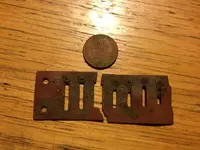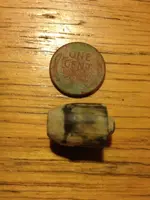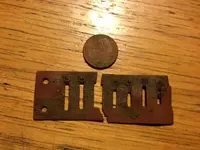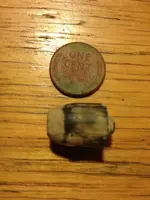In a reply to Creskol, DJDigger wrote:
> How so certain [that it is a post-civil-war one]?
I'm speaking only as an "observer" on this subject,
not as an expert. There has been a lot of debate about whether these
long rectangular
brass reed-plates from harmonicas are pre-1866 or not. The consensus of opinion from historical-document Researchers (who have studied the invention and early production-history of harmonicas) is that this particular version (long rectangular brass) is almost certainly post-civil-war. Speaking for myself as a digger who has found several just like it at civil war sites, that is difficult for me to believe. But I feel bound to accept what the Historical Harmonica Researchers say.
A very short summary:
What we now call a harmonica was first invented in Europe in the 1820s. At the time, it was called a "mouth harp." There were several variations of the basic form, one of which was called an Aeolian. For several decades after invention, nearly all production took place in Europe. Also, for a long time after invention, each one had to be made "by hand" -- which means the quantity produced was low.
On that subject, and in particular the
dates, here is info from Wilipedia (scroll down to the "History" part of the article):
Harmonica - Wikipedia, the free encyclopedia
[Wikipedia quote]
"By 1855, there were at least three harmonica-making businesses:
C. A. Seydel Söhne,
Christian Messner & Co., and Württ. Harmonikafabrik Ch. WEISS. [Note, all were in Europe, none in the US.] Owing to competition between the harmonica factories in Trossingen and Klingenthal, machines were invented to punch the covers for the reeds. In 1857, Matthias Hohner, a clockmaker from Trossingen, started producing harmonicas. Eventually he became the
first to mass-produce them. He used a mass-produced
wooden comb [not metal] that he had made by machine-cutting firms. By 1868, he began supplying the United States."
[End of Wikipedia quote.]
Saying again, as a civil war relic-digger, I was surprised to hear that the long rectangular brass reed-plates are believed to be post-civil-war era. I've posted the information above simply to explain Creskol's statement that the version found by DJDigger is "99%
likelihood" postwar.









